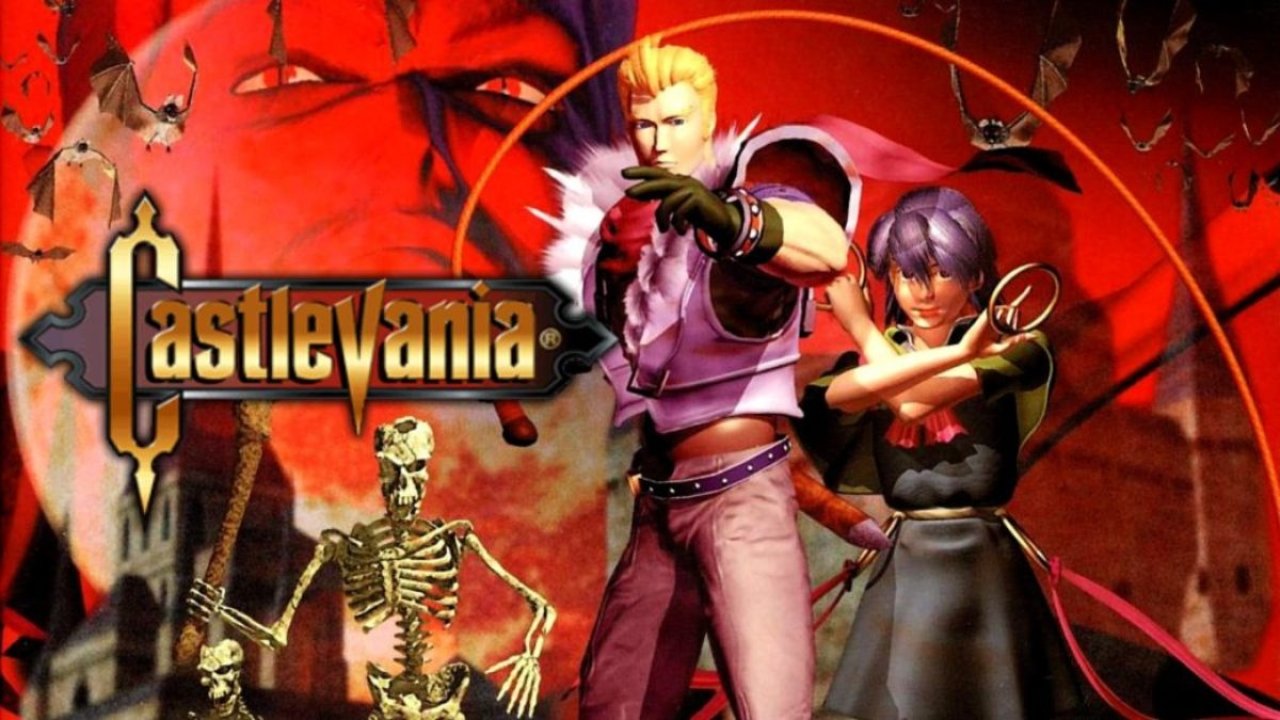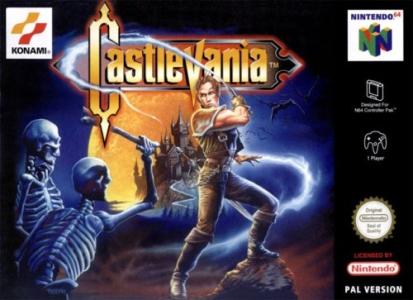

Platform: Nintendo 64
Region: PAL
Developer(s): Konami Computer Entertainment Kobe
Publishers(s): Konami
ReleaseDate: 1999-05-14
Players: 1
Co-op: No
Castlevania
Also know as: Castlevania 64
Castlevania (also referred to as Castlevania 64) is a 1999 action-adventure video game developed by Konami's Kobe branch for the Nintendo 64 video game console. An expanded version of the game, Castlevania: Legacy of Darkness, was released later in the same year. Castlevania is the first 3D game in the Castlevania series. The player selects one of the game's protagonists to control: Carrie Fernandez, a young orphan gifted with magic powers, or Reinhardt Schneider, the whip-wielding heir to the Belmont clan (the series' recurring protagonists). Carrie and Reinhardt set out on a quest to stop Count Dracula's impending return to power after a century of dormancy. The characters travel to and explore Dracula's grand estate in their mission to defeat the count and his horde of undead minions. Gameplay The player-character Reinhardt can jump between 3D platforms to traverse areas. The GUI displays the time of day, which has an effect on the gameplay. Castlevania, like most of its predecessors, is primarily an action-adventure and platforming game. The Japanese logo for the game include the words "real action adventure" in English. Combat is slightly more complex than in older entries. A basic targeting and lock-on system has been implemented. Players have the use of both a long-range attack (the whip for Reinhardt, homing energy balls for Carrie) and a close-quarters attack (dagger and rings respectively). Each weapon has strengths and weaknesses. For example, the Cerberus hounds can outrun Carrie's orbs, and Reinhardt must jump to land blows when fighting the vampire in the Castle Keep. Both characters can acquire sub-weapons, of which only one can be used at a time. In past Castlevania titles they were powered by red hearts, but in this game are instead powered by red jewels. The sub-weapons are series mainstays: the axe, knife, cross, and holy water. A large part of the game's challenge is also based on jumping from platform to platform while avoiding environmental hazards such as enemies and traps. Platforms are usually stationary, but some may rotate out from under the player, move through the environment like a rail shooter (the gondola in the Tunnel level), and crumble or fall away underfoot. There are also some invisible platforms that either afford players a strategic advantage or lead to hidden items. Castlevania also includes elements from the survival horror game genre. In addition to the trappings and narrative devices of Gothic horror, players are often placed in situations that may evoke feelings of stress, anxiety, and vulnerability. Players may be trapped in caged fights with monsters, such as the battle with the Cerebrus hounds in the Villa when the screen darkens to near-black. Some caged battles are timed, such as the boss battles in the Duel Tower level, where the gamer will be crushed by a falling ceiling should they not best their enemy in time. Vampires are also often fought in caged environments, with the added complication that they can latch onto Carrie and Reinhardt to suck their blood. If the player doesn't break free by rapidly rotating the control stick, the character's status changes to "vamp" and they will not be able to use their primary weapon or healing items. Unless a specific item is used to recover, the game becomes exponentially more challenging. Castlevania also features two other survival horror sequences: In the Villa's maze garden, players must follow Malus through the labyrinthine hedges while strong, unbeatable enemies give chase. In the Castle Center, players must carefully carry the "magic nitro" item through an obstacle course to its destination. One jump, fall, or hit will cause the volatile chemical to explode, resulting in immediate death. Although progression through the game is relatively linear, with characters unable to revisit completed levels, there is also an emphasis on exploration. Most levels require only occasional backtracking, and are relatively straightforward in how players progress. The Villa and Castle Center levels, however, are sprawling environments that require in-depth exploration. This element of exploration and discovery is strengthened by the fact that there is no in-game map, requiring players to rely on memory alone to navigate. Occasionally boss battles will not occur at end of a level, but rather in the middle or even at the beginning (such as in first level, where players must fight a boss moments after starting the game). The Duel Tower level consists only of boss battles. Both styles of levels include light puzzle-solving, such as the astronomical puzzle in the Castle Center's planetarium. Puzzle solving often involves non-player characters such as Charlie Vincent, Rosa, and the lizard man. Conversations with these characters may yield insights or items necessary to progress in the game. Castlevania features an internal clock that results in a day/night cycle. In a few choice areas the time of day will affect events in the story: characters may not appear or be unwilling to talk at a certain time of day. For example, in the Villa level players must meet Rosa at sunrise in the rose garden and Charlie Vincent will be asleep at night. Also, if the player takes 16 or more in-game days to beat the game, the game will give them a bad ending in which Dracula and his dark forces prevail. The time of day also affects whether or not the player can access certain areas of the game. Doors sealed by magic and bearing a sun or moon crest can only be opened during the corresponding time of day. Additionally, timed events can occur which grant access to secrets, such as the pillar in the Villa's courtyard fountain. Players can use sun cards to advance the time to sunrise (6 AM) and moon cards to sunset (6 PM). Finally, the strength of certain enemies can fluctuate based on the time of day. For example, vampires are much harder to defeat at night than during the day. Castlevania has different settings to adjust the challenge posed by the game. In "easy mode", the player will only be able to play until the end of the Castle Center level, at which time the game will prompt them to try "normal mode" to advance to the subsequent stages. Upon fulfilling certain conditions "hard mode" will be unlocked. In this mode enemies take more hits to defeat and subweapons require more red jewel points to use (e.g. 2 jewel points for the knife instead of 1). Currency, in the form of moneybags, can be used to purchase items that are not dropped by enemies or found hidden in the environments. The heroes may also need to battle Renon, the demon salesman, should they spend over thirty thousand gold. An inventory on the pause screen displays items, such as health-restoring meat, restorative ampoules, keys, etc. The North American and PAL versions of the cartridge do not have a built-in save feature; all saved games are stored on a memory card (the Controller Pak) attached to the Nintendo 64's controller. Players save their in-game progress by using white jewel items scattered throughout the levels, which must be touched to activate and can be used indefinitely.
Trailer: YouTube
ESRB Rating: Not Rated
Genre(s): Action | Adventure | Platform | Horror





